Last Updated on July 9, 2025 by Nico
Rose-infused oil is wonderful for soothing irritated skin and helping to give you a healthy glow. It only uses two ingredients, and you can use foraged rose petals or rosehips from a backyard rose bush to make it.
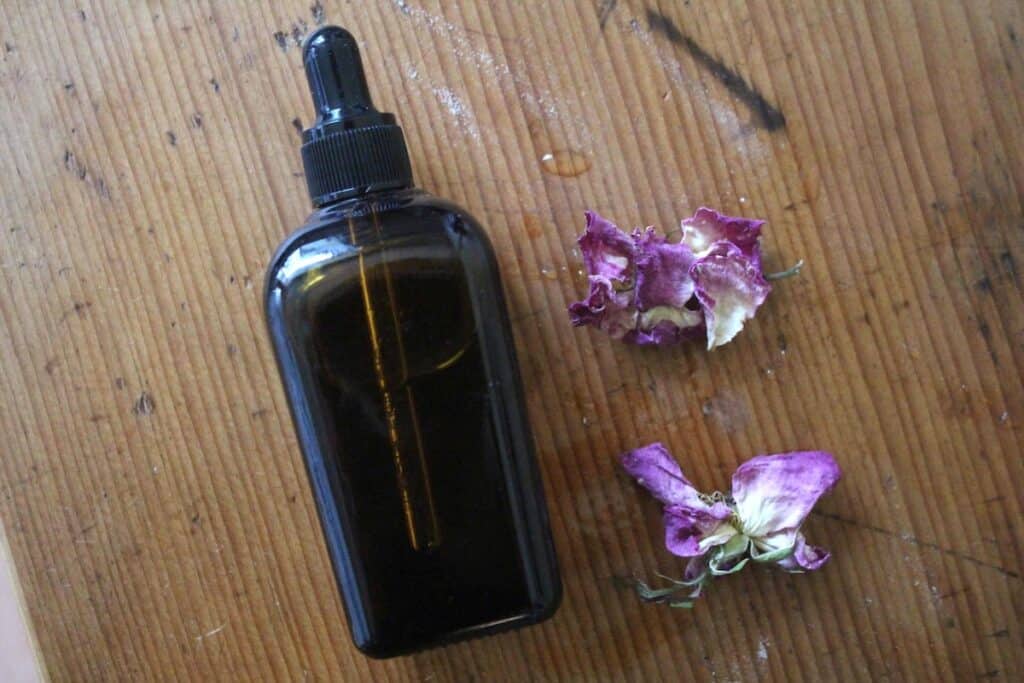
Making infused oils is so easy, but so luxurious. No weird ingredients, no preservatives – just nourishment! Rose-infused oil is one of my favourites to make, but I also like to make chamomile-infused oil and plantain oil because they make wonderful bases for homemade salves.
What part of the rose to use
You can harvest fresh roses and use the petals to make this oil. You can also wait for the rosehips to appear after the flowers have died back and use them.
If you use fresh, foraged rose petals, let them sit out to dry for a day or so, allowing some of the moisture to evaporate.
Benefits of rose-infused oil
- Roses can be rich in anti-inflammatory properties, which help to soothe skin irritation
- Roses can be high in antioxidants, which can help neutralise free radicals (these damage skin)
- Rose infused oil can support all skin types, from acne-prone skin and sensitive skin to more mature skin

Foraging tips
If you’re growing your own unsprayed roses, you already have access to organic rose petals (yay!). You can also forage wild rosehips in the fall or purchase dried rose petals or rosehips from a trusted source.
Here’s what to look for:
- Fresh roses: Ensure they’re free from pesticides and harvest in the morning for best results.
- Rosehips: Small, red, berry-like fruits that appear on rose bushes after flowering. They’re rich in vitamin C and antioxidants.
- Dried rose petals: If you cannot forage locally, try to find a source that sells organic petals.
How to make rose-infused oil
What you need
Supplies
Dried rose petals, rosehips, or a mix of the two – Here’s an organic source for dried rosehips
Carrier oil of your choice – such as olive oil, jojoba oil, sweet almond oil, fractionated coconut oil, or rosehip seed oil. For acne-prone skin, you can try jojoba or hemp seed oil. I would avoid using grapeseed oil and sunflower oil as they are highly processed.
Tools
A small pot or double boiler setup with a bowl on a saucepan
Clean glass jar with lid – I use these pint-sized mason jars
Cheesecloth or fine mesh strainer
Small bottle or tin for storing the finished oil – I like these
For complete measurements, see the printable recipe card below.
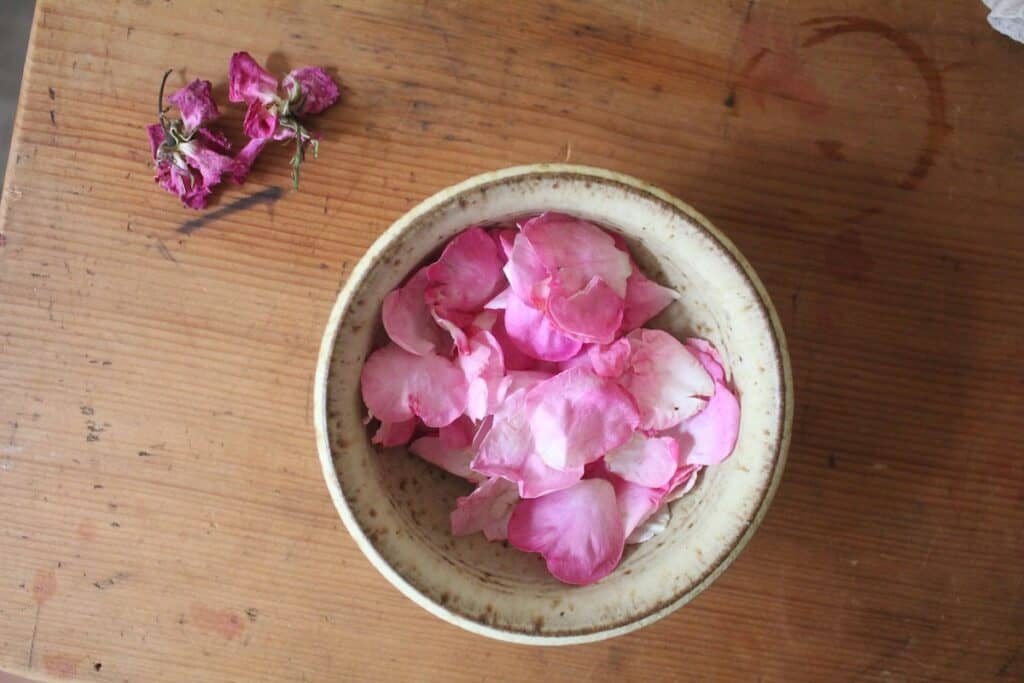
Instructions
If you’re using dried rose petals or rosehips, ensure they’re clean and fully dry. If using fresh roses, wash them and let them wilt for a day or two to reduce moisture (which helps preserve shelf life).
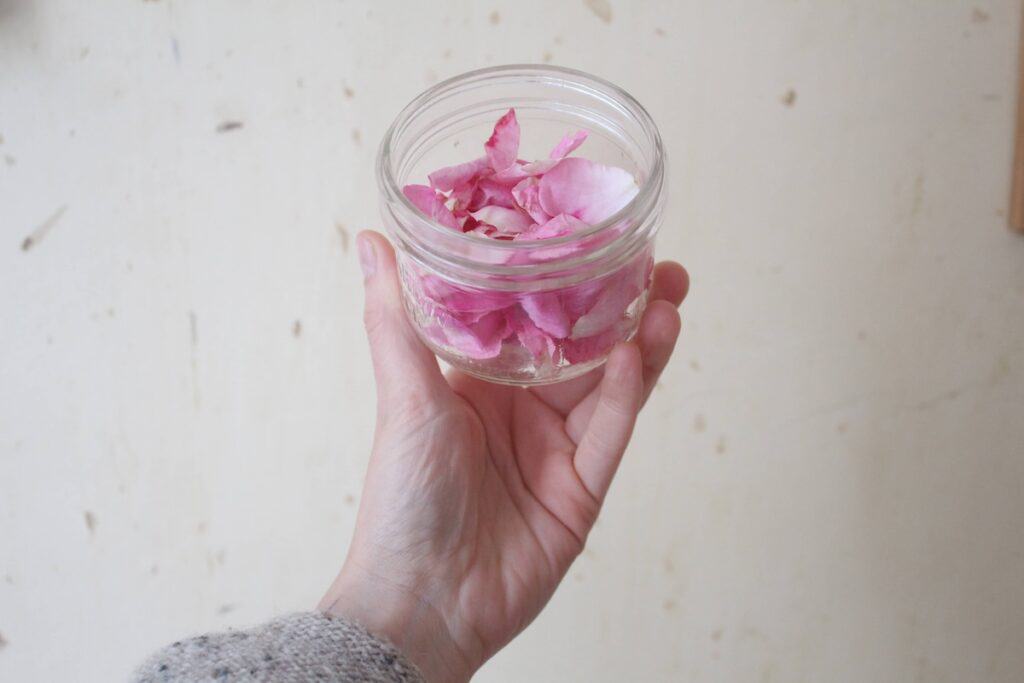
Add your petals or rosehips to a clean glass jar and pour in enough of your chosen carrier oil to cover everything fully. Stir gently to release any air bubbles.
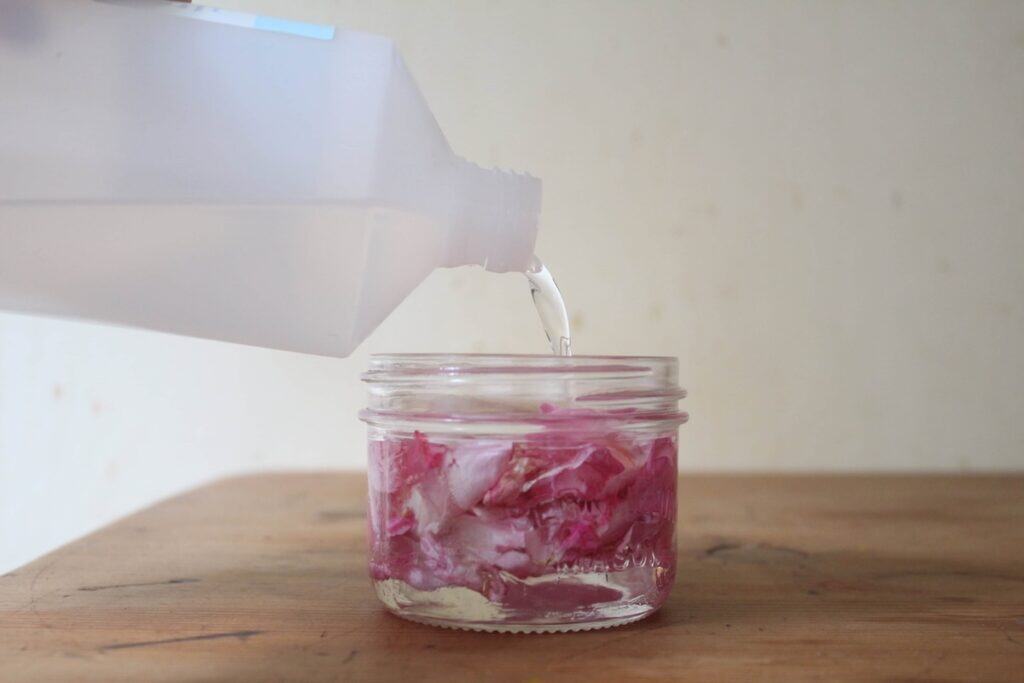
Next, there are two methods to choose from to infuse the oil:
Double Boiler Method (Quicker Option)
- Place your jar (or a heatproof bowl) into a pot of water and heat gently over low heat.
- Let it infuse for 1 to 2 hours, never allowing it to boil. The low, steady heat helps to extract the beneficial properties of roses.
Sun Infusion (Longer Option)
- Seal your jar and place it in a sunny window for 3-4 weeks. Try to shake it daily to keep everything covered in the oil.
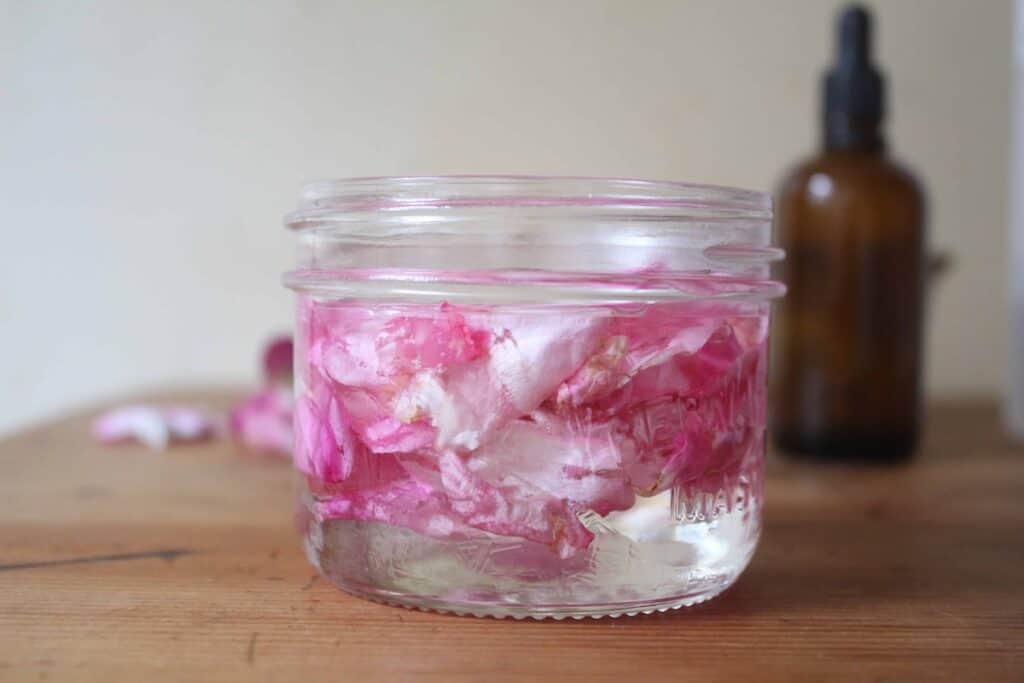
After the infusion is finished, strain the oil through cheesecloth or a mesh strainer into a clean jar.
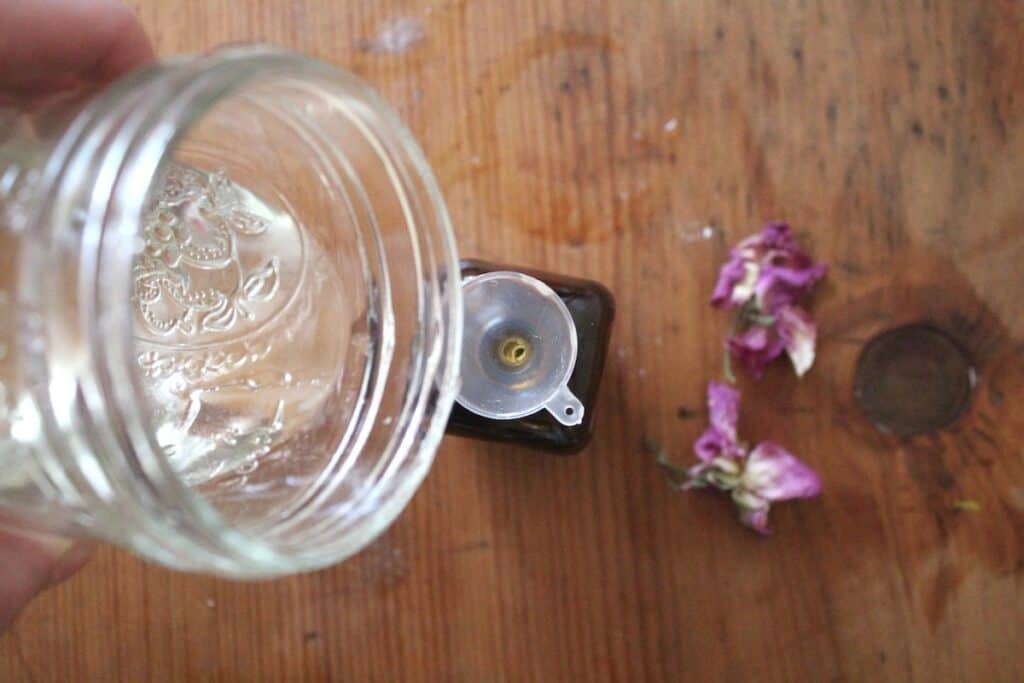
Store your finished rosehip oil in a cool, dark place to protect it from UV light and preserve the rose essential oils in the infused oil. I use an amber glass dropper bottle to make it feel a bit fancier!
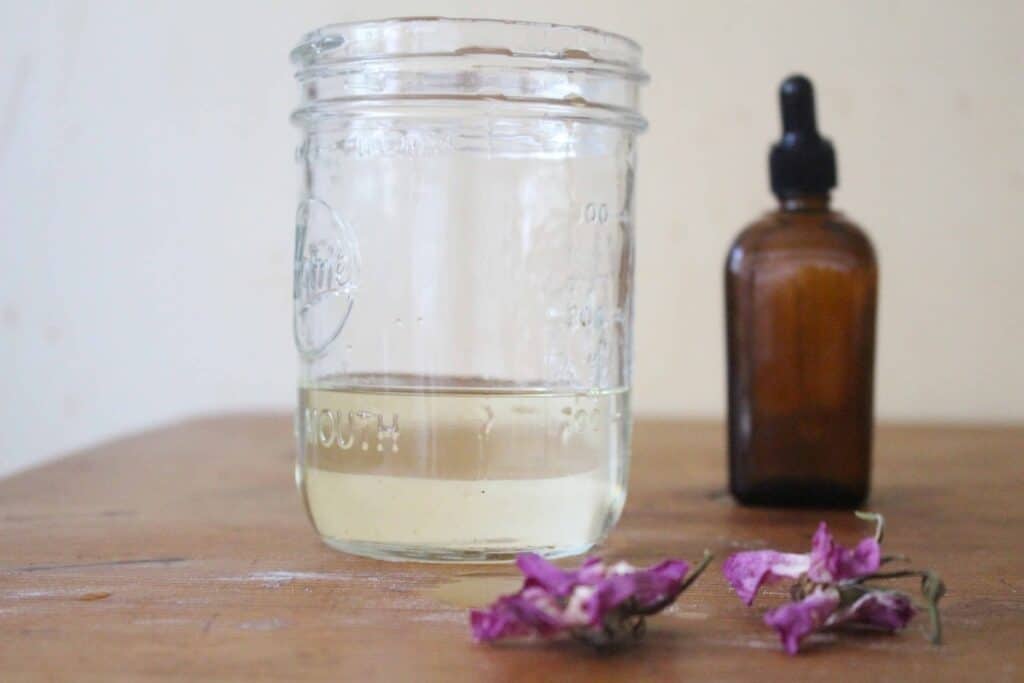
How long will it last
This oil should have a long shelf life if you store it away from direct sunlight in a dark place like a cupboard or pantry. I like to store mine in a dark glass bottle to better protect it from UV light, but it’s not necessary. If stored properly, the oil should last 6 to 12 months.
How to use it
Use a small amount—just 2 to 4 drops—on your face, or a teaspoon for larger areas like arms and legs.
The oil makes a great base for rose body oil, lip balm, massage oil, or facial serum.
Disclaimer – I’m not a medical professional and do not intend to offer medical or health advice in any content I create. I offer information for educational purposes and, as always, get your physician’s advice or the advice of your health care provider before trying a new herbal remedy. There are always possible unintended consequences of trying a new herbal remedy such as an allergic reaction or unexpected side effects like interactions with other medication.
Save for later
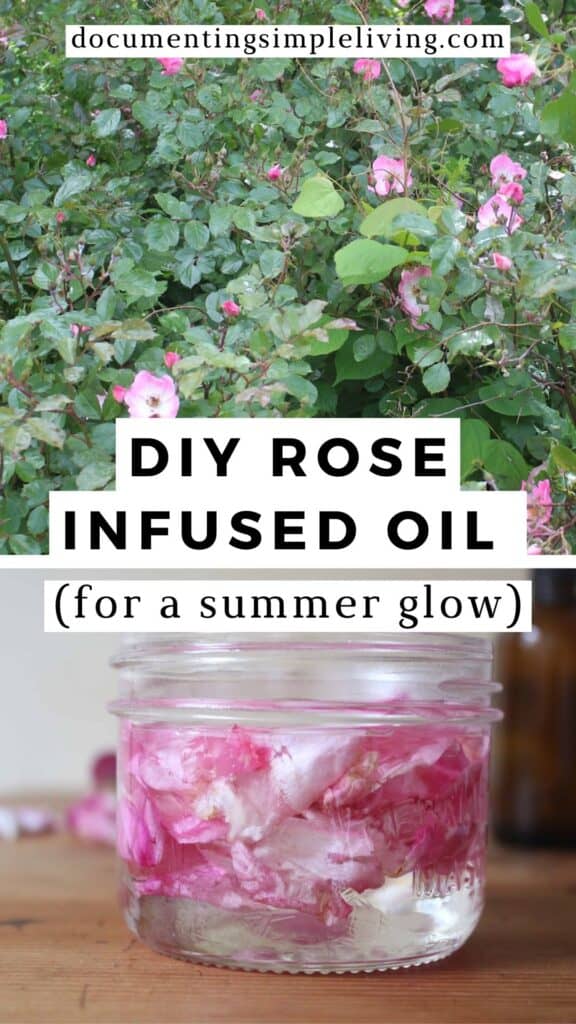
This post may contain affiliate links, which means I make a small commission at no extra cost to you. As an Amazon Associate, I earn from qualifying purchases.
Find us elsewhere…
If you make this how-to and enjoy it, please consider giving it 5 stars. Find me on Instagram @documentingsimpleliving and show me what you’ve made!
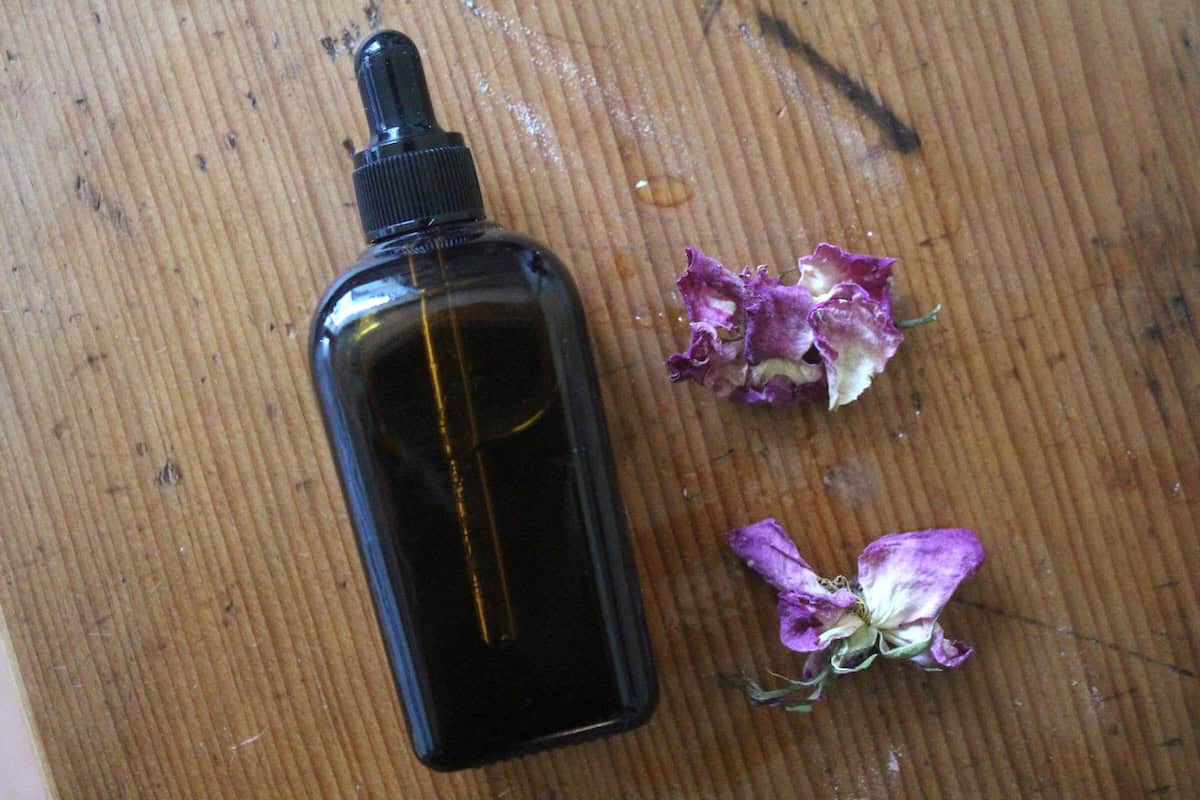
How To Make DIY Rose Infused Oil
Ingredients
Equipment
Method
- If you’re using dried rose petals or rosehips, ensure they’re clean and fully dry. If using fresh roses, wash them and let them wilt for a day or two to reduce moisture (which helps preserve shelf life).
- Add your petals or rosehips to a clean glass jar and pour in enough of your chosen carrier oil to cover everything fully. Stir gently to release any air bubbles.
- Next, there are two methods to choose from to infuse the oil:
- Place your jar (or a heatproof bowl) into a pot of water and heat gently over low heat.
- Let it infuse for 1 to 2 hours, never allowing it to boil. The low, steady heat helps to extract the beneficial properties of roses.
- Seal your jar and place it in a sunny window for 3-4 weeks. Try to shake it daily to keep everything covered in the oil.
- After the infusion is finished, strain the oil through cheesecloth or a mesh strainer into a clean jar.
- Store your finished rosehip oil in a cool, dark place to protect it from UV light and preserve the rose essential oils in the infused oil. I use an amber glass dropper bottle to make it feel a bit fancier!
Leave a Reply